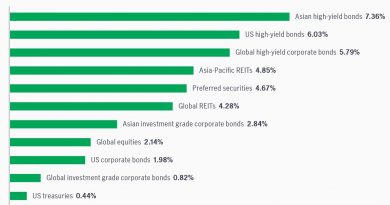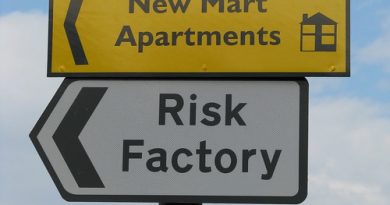Investment Decision Making Process For Personal Finance
For personal finance, the investment decision making is a complex process. It involves many variables. In the video below, we will learn how to consider many variables in the investment decision making process.
Transcript:
Why should an investor establish an investment plan? It’s very important for investors to have to go through a certain process to have success. Okay, many investors have no plan. They simply blindly throw money into an account. Or worse yet, they choose not to save it all because they find the whole process of investing saving for retirement, saving for the child’s education to be overwhelming. And they do nothing. You may have seen that commercial where I think it’s I n g, where people walk around with a big number and they talk about This is my number. This is what I’m going to need to retire. That means that person’s talk to a financial planner and established certain goals. And that planner is help. That person determined how much money they need in their account in order to meet those goals. In fact, you may have seen the commercial where the gentleman is walking down the street. He’s got his numbers. His friend is, is trimming. His hedge is, I believe, and he says, well, this is my number and he says, What’s your number? And he says, Ah, trillion, a gazillion, I don’t know. I just blindly throw money at the problem. He has no plan. He doesn’t know what he wants to do, and that’s a real problem. And that’s one of the reasons that so many people have financial difficulty because they have no plan. So it’s important to establish a plant’s important to think about what it is we want to do. And for those people who don’t have expertise or interests in doing that, it’s always good to see a financial planner. So let’s take a look here at some of the steps, Okay? Before you even start investing, you need to meet certain investment prerequisites that is, you need to adequately provide for a necessities of life that is, emergency funds, emergency cash funds. You oftentimes hear people say that experts say that you should have six months set aside six months worth of living expenses set aside for emergencies. You might lose a job, your car might break down. You might need to fix that. You know, the roof on your house might be leaking, and you might need to fix that. There are all kinds of emergencies that pop up, and you need to have an emergency reserve, but certainly losing a job can be a big problem, and it does happen. You also need to have adequate protection against various common risk, such as death, illness and disability. So basically, we’re talking about insurance. We’re talking about life insurance for death protection. Now, if you don’t have any dependents, you don’t need life in shorts. You don’t need to go out, buy life insurance just for the sake of having life insurance. But if you have a family, if you have someone that is counting on you for support, you need life in shorts. Okay? Health insurance. No matter how healthy you are now, you could get sick at any time. And health insurance is a necessity. Okay? Disability in shorts. Another thing that people tend to forget. You may be in a profession like mine as a college professor where you know, I could break a leg and I can work. But you can still become disabled and not able to work. And people who were in physical jobs you could be a plumber. You could be a carpenter. You could be a truck driver if you become injured. If you break a leg. If you break an arm you may be out of work for quite a while. In fact, you’re far more likely to become disabled than you are to die. So it’s important to have a disability in short. So before you even start the investment process, you need to look into these things. And if you go to a financial planner, that person will not start talking about how to investor money. They’ll start talking about all of these things before we even start Step two, which is establishing the investment goals and in order to established our investment goals, we have to think about what it is we wanted. Are we trying to save money for retirement? Are we trying to put money aside so that oh, enhance our income? Are we saving for a big expenditure, like buying a house or sending a child to college? Are we trying to shelter our income from taxes? Nobody likes taxes, but some people are not behind of tax bracket to worry about that, although all of us can try and shelter some of our income from taxes by investing in retirement accounts like a four oh one K or for O three B that allows you to shelter some of that income from taxes. You get a deduction today and you won’t pay the tax into you Withdraw when you’re retired. After you’ve established goals. What we like to do is we adopt an investment plan and we write it down. We often times refer to this as an investment policy statement. If you ever do. The Chartered financial analyst program CFA program. One of the important points is writing investment policy statements, and I have another tutorial where I talk a little bit about that, and an investment policy statement is essentially a road map that points out your goals. What are you saving for? What’s your time horizon? What kind of risks are you willing to take? What sort of tax bracket or you went? It’s good because it allows you to establish what it is you’re going to do. And if you run into bumps in the road, you want to remind yourself, this is my long term plan on thirty five years old. Sure, the market is down right now, but I’m not going to stop investing in stocks. In fact, I might want to increase my investments stocks because prices are low. I’m not going to be using that money for a long time, so you want to have a plan. It’s also a contract between you and your financial professional. If you’ve written an investment policy statement and your financial professional is investing in in securities that don’t meet with your investment policy statement, perhaps you have, ah, moderate level of risk. And the person is investing in very high risk technology socks. Well, if they lose money for you, you may be able to You may have some course of action. Okay, It also helps the professional to do well for you because it’s hard to invest someone’s money when you don’t know what it is they want. So a clear, clearly written investment policy statement is important. Then we go through the process of invaluable evaluating investment vehicles that is, different types of securities stocks, bonds. You hear the general category of stocks, but there are a lot of different kinds of stocks. There are blue chip stocks, those big companies that have been around a long time. They’re very stable. They tend to generate solid income. They tend to pay sufficient dividends, but they don’t tend to have a lot of growth because they’re very large companies. Then you have smaller companies. Microsoft is probably a blue chip company. Out’s a very large, well established company. But thirty years ago, Microsoft was a small, emerging company that had a lot of opportunity to grow. It’s harder for Microsoft to grow now because it’s such a large company. Okay, the same with Apple, the same with General Motors or General Electric or Ford. These air big companies. Okay, they’re not going to grow that rapidly. But there’s some smaller and mid sized companies that have a lot more room for growth. Once you’ve selected what you think, they’re suitable investments. You need to gather information and do some research on those investments, so you have some general categories of risk and return what you might like to invest in. Then you start doing some analysis on these individual companies, and then you make some investments selections. Okay, once you’ve done that, you want to construct a portfolio, a diversified portfolio and in finance. When we talk about diversification, we’re not just talking about buying a lot of stuff. We’re talking about buying things that tend to have different attributes. If you buy all technology stocks, or if you bought all computer stocks when the computer industry is doing well, your portfolio will do well when the computer industry is doing poorly. Your portfolio will do poorly. So you want to. You don’t want to just have a lot of different stocks you want have different kinds of stocks. You might wanna have food companies. You might want to have some technology stocks. You might want to have some transportation stocks and financial stocks if you’ve watched the market at all. Sometimes financial companies do very well. Banks do extremely well, and then there are times when they do extremely poorly. Sometimes manufacturing companies, they’re doing very well. Sometimes they’re doing poorly. Okay, Different kinds of companies do well in different types of environments. Okay, food companies, companies that produce necessities tend to be much more stable. People have to eat, even if the economy is not that good. But when it comes to technology, okay? Or let’s say airlines would be a good example. If the economy is not good, people don’t travels much for vacation. They don’t travels much on business. They get hurt. But people still need to eat, but you’d like to hold. Companies like airlines were like hotels in your portfolio. Why? Because when the economy is booming. They tend to do very well. Okay, once you’ve set up that portfolio, you need to manage the portfolio you need to see. Has it performed as well as expected? Have things changed? Do we need to take some sort of corrective action? Do we need to sell some of these securities and add other securities to the portfolio? So there’s a process for going through this. And the successful investor, whether it’s an individual or whether it’s an investment professional, will follow these basic steps in order to get the best possible outcome. Doesn’t ensure that you’re always going to be right. But when you have a plan and you stick to it and you keep evaluating your plan, you’ll do much better than the person who just essentially eyes is like a person at a casino that just puts their money on red or black on roulette and just hopes their number comes up. If you have a plan. If you have a strategy, you’ll do much better.

